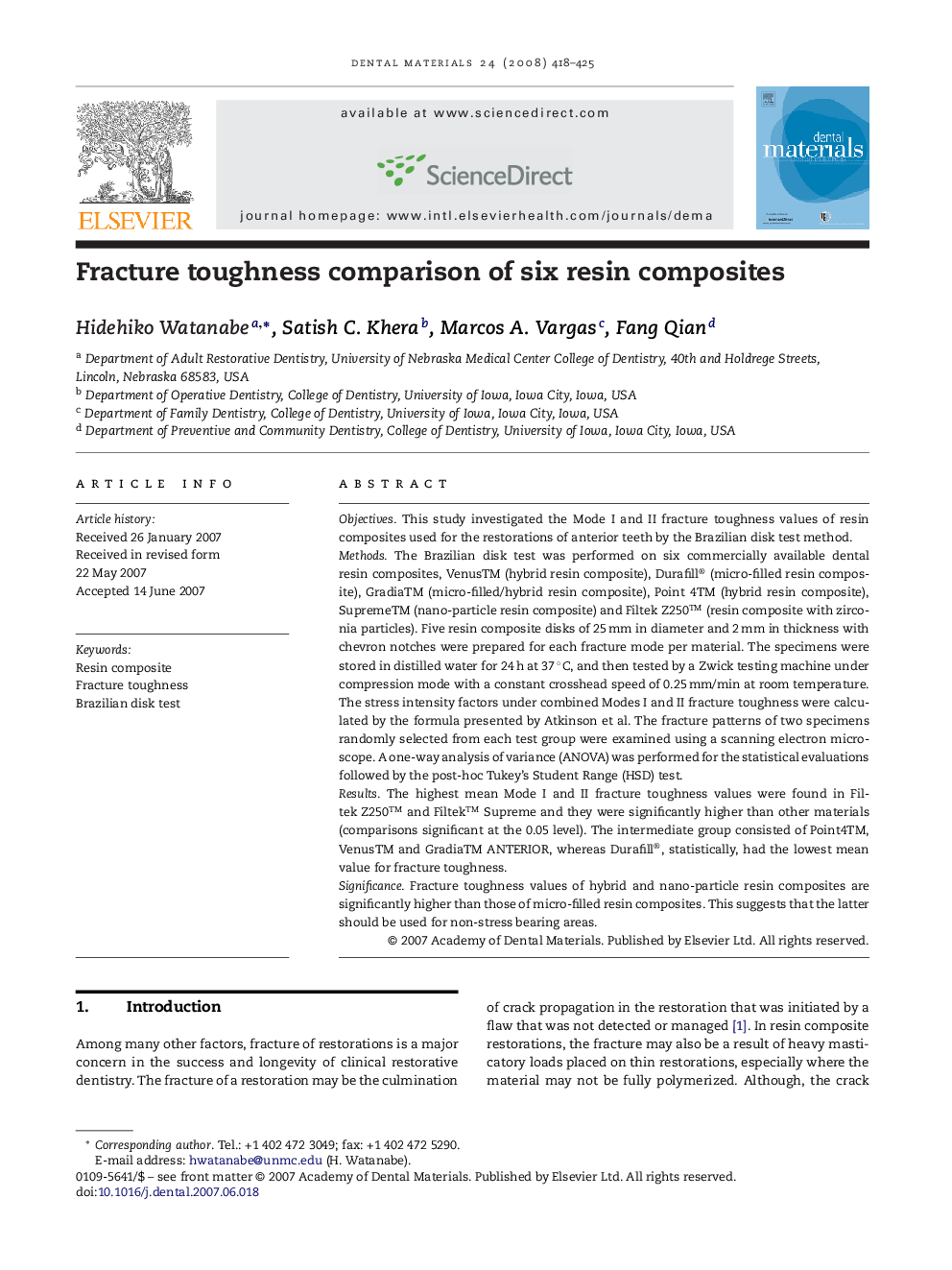| Article ID | Journal | Published Year | Pages | File Type |
|---|---|---|---|---|
| 1422689 | Dental Materials | 2008 | 8 Pages |
ObjectivesThis study investigated the Mode I and II fracture toughness values of resin composites used for the restorations of anterior teeth by the Brazilian disk test method.MethodsThe Brazilian disk test was performed on six commercially available dental resin composites, VenusTM (hybrid resin composite), Durafill® (micro-filled resin composite), GradiaTM (micro-filled/hybrid resin composite), Point 4TM (hybrid resin composite), SupremeTM (nano-particle resin composite) and Filtek Z250™ (resin composite with zirconia particles). Five resin composite disks of 25 mm in diameter and 2 mm in thickness with chevron notches were prepared for each fracture mode per material. The specimens were stored in distilled water for 24 h at 37 °C, and then tested by a Zwick testing machine under compression mode with a constant crosshead speed of 0.25 mm/min at room temperature. The stress intensity factors under combined Modes I and II fracture toughness were calculated by the formula presented by Atkinson et al. The fracture patterns of two specimens randomly selected from each test group were examined using a scanning electron microscope. A one-way analysis of variance (ANOVA) was performed for the statistical evaluations followed by the post-hoc Tukey's Student Range (HSD) test.ResultsThe highest mean Mode I and II fracture toughness values were found in Filtek Z250™ and Filtek™ Supreme and they were significantly higher than other materials (comparisons significant at the 0.05 level). The intermediate group consisted of Point4TM, VenusTM and GradiaTM ANTERIOR, whereas Durafill®, statistically, had the lowest mean value for fracture toughness.SignificanceFracture toughness values of hybrid and nano-particle resin composites are significantly higher than those of micro-filled resin composites. This suggests that the latter should be used for non-stress bearing areas.
